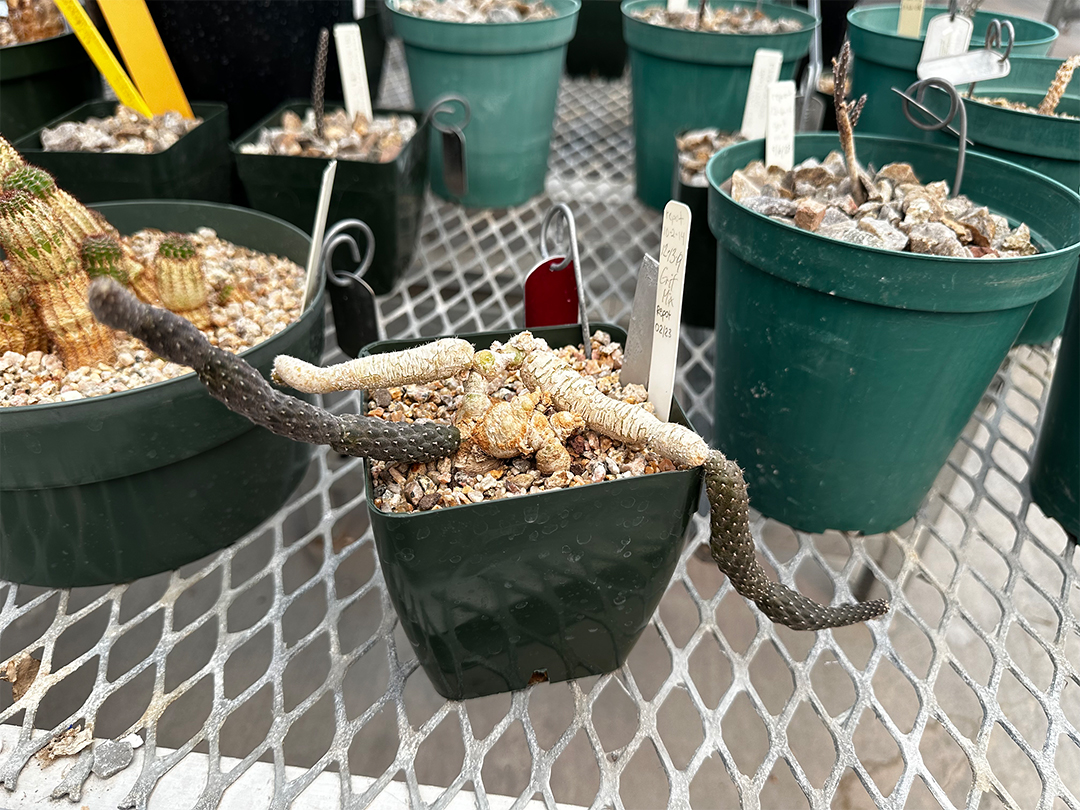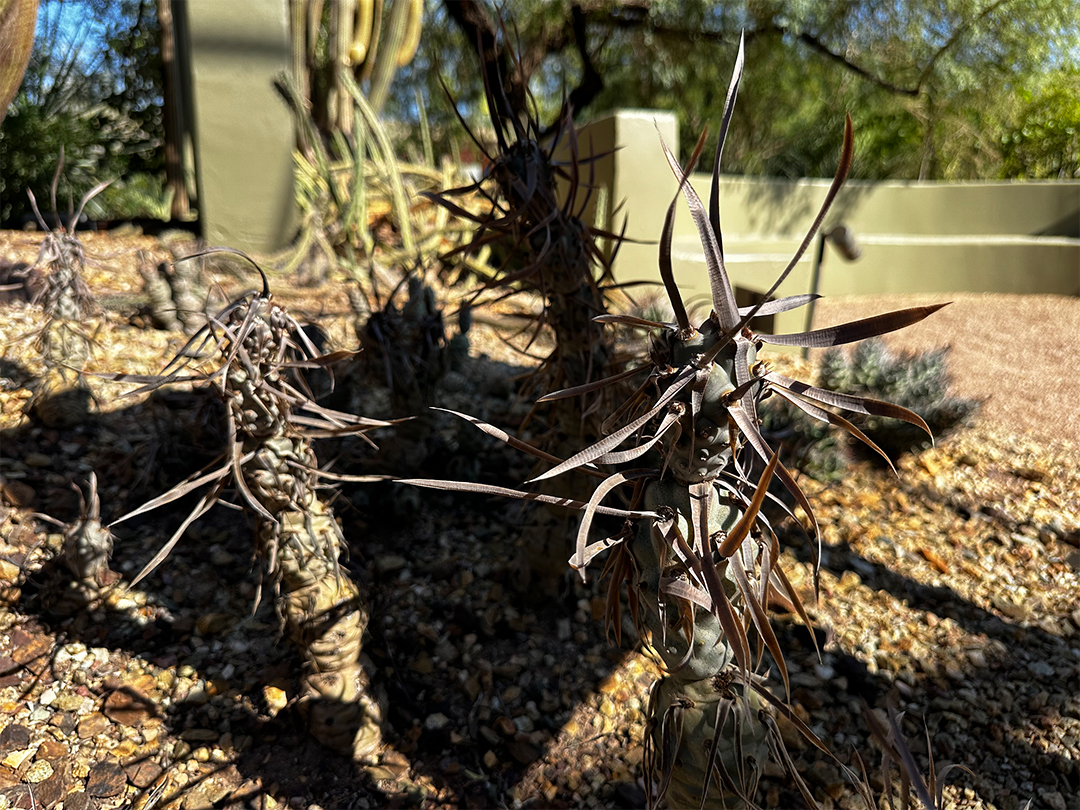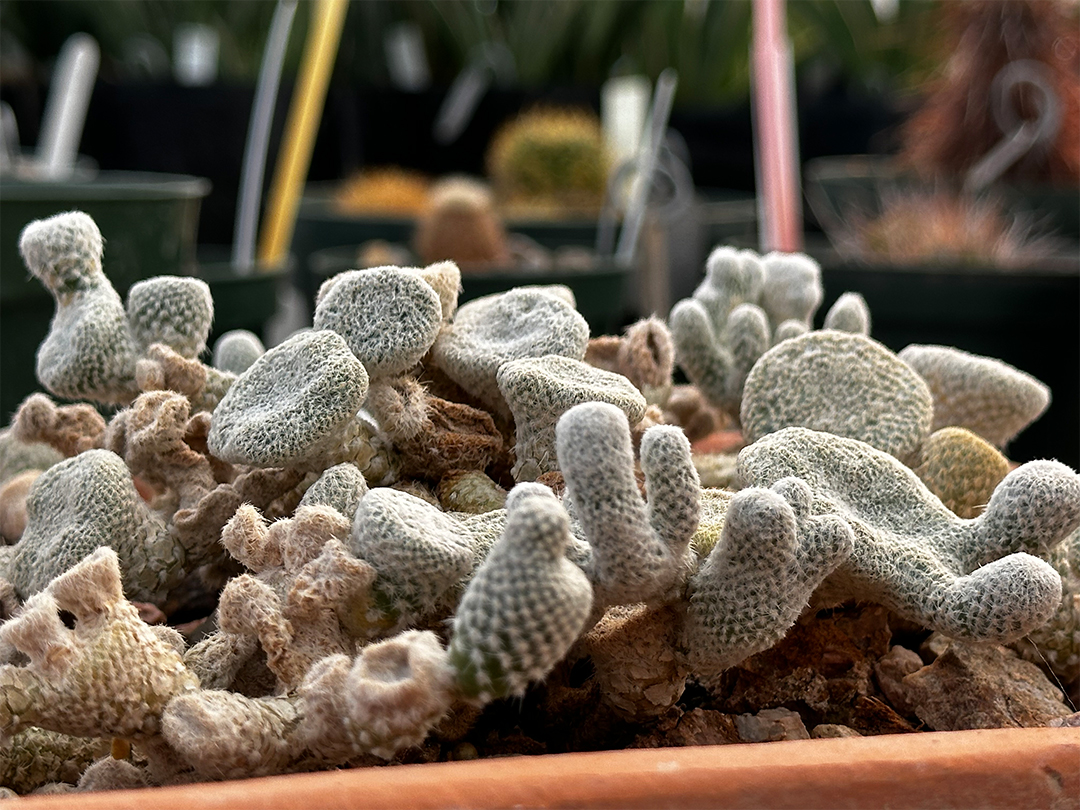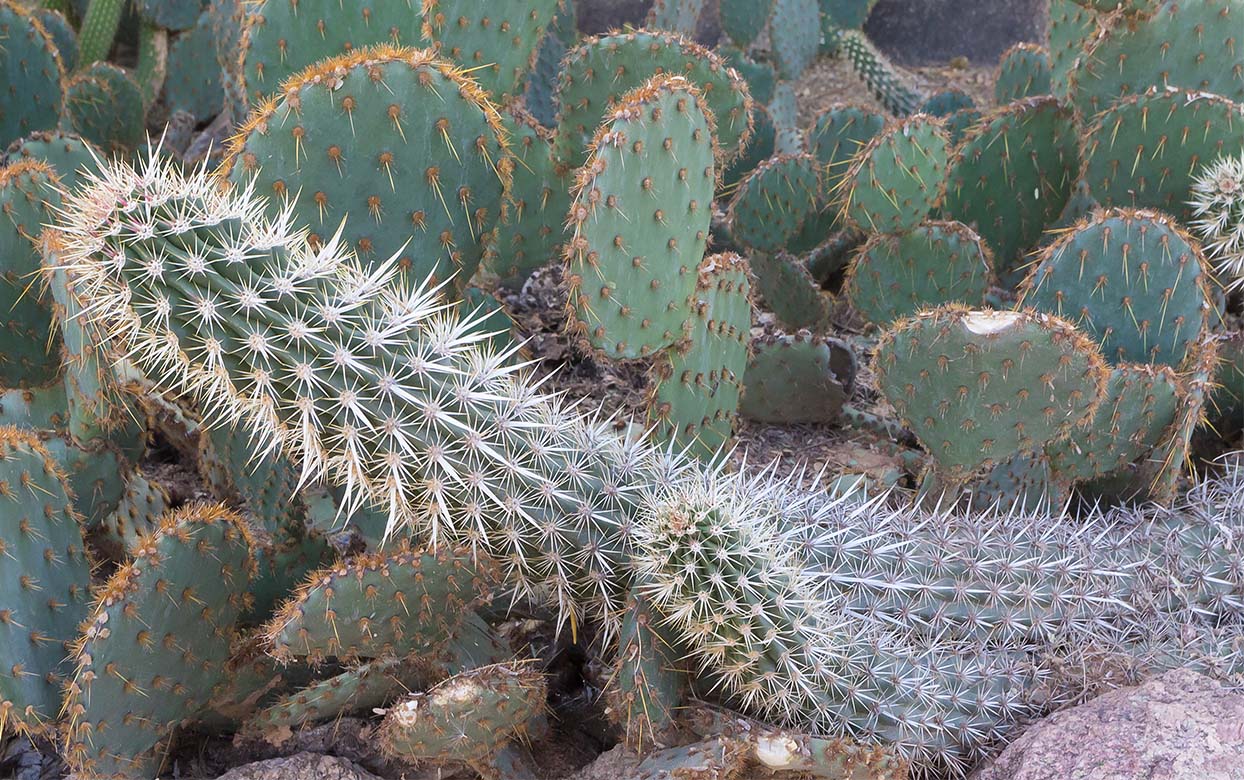Razor sharp spines. Plants that cut themselves to creep along the ground. Cactus with mutations! At Desert Botanical Garden, guests will encounter several ‘creepy’ cactus species throughout the trails.
Learn more about some of the Garden’s cactus species with spooky plant features, and find them out on the trails on your next visit.
Don’t miss out on the boo-tanical thrills of Strange Garden on Oct 27-28 with mad botanists, free pumpkins, a demonstration from Dr. T-Rex and the Phoenix Herpetological Society. The event is included with general admission. Tickets at dbg.org.
Stenocereus eruca, also known as the creeping devil, is a cactus native to Baja California, Mexico, covered in spines and grows along the ground. The plant has adventitious roots that allows it to plant them wherever it can, and then, it cuts itself from its main stem to crawl along the ground. Guests can find these cactus in the Kitchell Family Heritage Garden.

Lophocereus schottii mounstrosous, also known as totem pole cactus, naturally occurs in Baja California and is highly common in cultivation in Arizona. These mutant forms are created by aberrations in the growth meristem that results in their totem-like stems with irregular projections that lack ribs and spines. Several cactus species develop this monstrous form, which comes mainly from cultivation by isolating this mutation that can occur in cactus growth.

Pterocactus genera this is a very rare genera from Argentina that has tuberous roots, like a potato. The aerial stems live shortly for the season, only to go dormant in winter and live with the resources in the tubers. Several cactus genera have tuberous roots like Peniocereus (Queen of the Night), some Copiapoas, some Coryphanthas and Ariocarpus. But Pterocactus has the spookiest appearance. This cactus is not in the core garden but kept in a greenhouse due to its environmental needs.

In the spirit of weird looks, Tephrocactus articulatus is another peculiar cactus because of its flat, papery spines that resemble long nails or raffia fibers. The cactus is often called paper spine cactus, and it is native to Argentina. Guests can find the cactus in the Sybil B. Harrington Cactus Gallery.

Another rare cactus with a strange appearance is Maihueniopsis clavarioides, also known as dead man’s fingers. In its native Argentina, this grey-colored cactus typically has a flattened tops or conical stems that may mimic rocks. The cactus lacks noticeably sharp spines, but has tiny spines. Guests can see this cactus, which is housed in our greenhouse, at Strange Garden.
